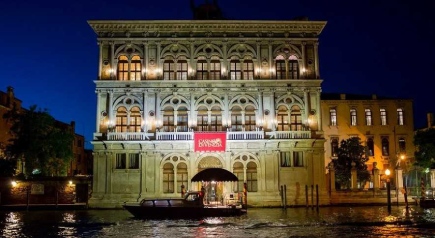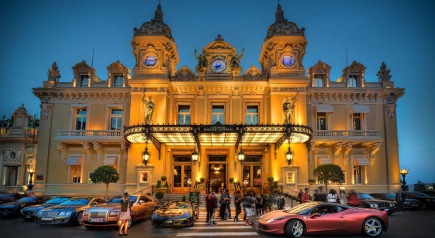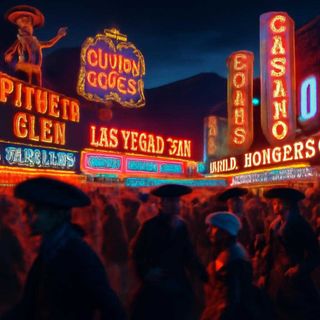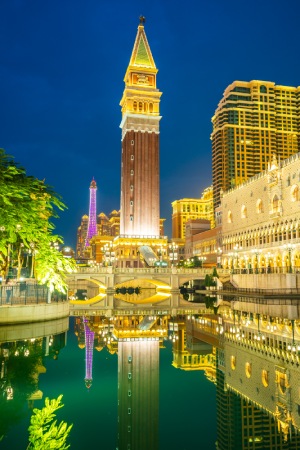Aristocratic Beginnings: Casinos as Symbols of Power
Early European casinos held gambling as a privilege of the rank or nobility. Architecture communicated exclusivity by means of ornament, symmetry, and craftsmanship, thereby locating gaming within higher social rituals of lutes, dances, and diplomatic meetings. The spaces dazzled so that the games could be deemed acceptable: stories were told on the ceilings; columns were set for processions, and the materials-marble, stucco, and optimize-were advertisements of wealth. These buildings became more than just mere venues; they were practically stage sets that actualized hierarchy, etiquette, and spectacle with design-first assembly at the entrance for ceremonies, entering into the hall for drama, and discreet withdrawal in private chambers.

The Casino di Venezia and Baroque Influences
This is harnessing the essence of Baroque theater in architecture. Opened in 1638, the Casino di Venezia had activities from ornateness through the playing of cornices and ceiling frescoes, and through the symmetry of axes, movement from public zones to semi-private rooms was choreographed as if the ceremonious spirit of approach and arrival had to be experienced within itself. As well as gaming, nobles met and mingled there; promenading was done in galleries, performances held in salons, and intimacy carried off within private chambers. Most importantly, psychologically, the décor was most conducive to anticipation-and-luxury contrasted with thick masonry and layered thresholds which distanced the whole experience from the city in order to encourage guests to actually stay. Luxury meant the gamble here belonged to culture, and not chance.

Monte Carlo and 19th-Century Grandeur
During the 19th century, Monte Carlo put its own stamp on the formula with Beaux-Arts gravitas. Charles Garnier worked with domes, marble foyers, and intricate ornamentations to create a civic monument to leisure. Flow moved from an entry dazzled into gambling referred to as richly appointed to theaters and terraces. Architecture melding casino, opera, and grand hotel. The rigorous composition of the building gave proper moral weight to gambling: Classical symmetry instilled order, and quality materials spoke to respectability. Monte Carlo hence positioned risk as rite and made the casino an internationally legitimized destination of the European elite.
The American Revolution: Las Vegas and the Age of Neon
With the turn of the century, gambling changed from elite ritual into one for the crowd. Out there in the desert, American designers and developers went full-on with velocity, signage, and psychology to keep their clientele entertained. Taste in Europe was bestowed as a status symbol through ornament; wonder in Las Vegas is sold through the means of ropes of light, and the planning of the land through the amount of time allowed for a certain purpose. Design now was a form of performance marketing, with the facades calling out to potential visitors from the highway and the interiors prioritizing throughput and immersion, a priceless blur of eating, drinking, shows, and play.

The Mass Entertainment Machinery
The 20th century shifted gambling from elite ritual to mass entertainment. In the desert, American developers embraced velocity, signage, and psychology to keep guests engaged. Where Europe used ornament to confer status, Las Vegas used light to sell wonder and used planning to maximize time on device. Design became performance marketing: façades beckoned from the highway, while interiors prioritized throughput, immersion, and a seamless blur of dining, drinking, shows, and play.
Las Vegas reframed the casino into a spectacle including some element of accessibility. Instead of a sequential experience with monumental architecture leading to an anteroom before the gaming rink, one entered through lobbies that hurriedly poured on the gaming floor. The circulation was simpler on the perimeter and more constrained in the center so as to reduce the friction between curiosity and the setting down of a first wager. The promise was for everyone to buy a ticket for excitement. The food courts, small lounge acts, and cheap rooms were, in a way, weekend customer fare, preparing the architectural backdrop for the American road trip and the mid-century consumer leisure development.
Labyrinths and Psychological Design
Mid-century Casinos perfected the concept of the "gaming labyrinth." Windowless halls, wandering paths, and carefully placed nodes nudged guests farther past the machines and tables. Wayfinding remained fundamentally blurred: sightlines bent around structures, exits sometimes got concealed behind a restaurant or a gift shop, and clocks simply disappeared. The carpets, lighting levels, and ceiling heights modulated arousal: bright and noisy slots in the center, calmer paths on the edge, bars as catch basins for dwell time. The floor had become this instrument which, tuned along with the game's own pace, prolonged engagement just so slightly-to-make the architecture an invisible partner intrinsically within the house edge.
Neon as City's Signature!
Outside, this neon language monumentalized the Strip. Animated signs, starbursts, and towering marquees lined a skyline legible from a moving car. Buildings became billboards; entrances doubled as theatrical stages. At night, the city became a kinetic facade, an urban opera of light that annihilated distance between architecture and advertising. This visual language put Las Vegas on the global map, asserting that illumination could claim a place and its promise more than stone or steel.
The Rise of Themed Casinos: Identity on the Strip
During the 1980s and 1990s, casinos evolved into big-time integrated resorts with hotels, retail, dining locations, theaters, and convention facilities lining up around larger casino floors. With increased competitions, theme gave instant recognition to the brand and differentiated the guest experiences. Themed architecture provided the narrative immersion-recognizable worlds that interfaced with wayfinding, photo ops, and revenue anchors-while preserving the core economics of casino design through complementary adjacencies and continuous activation.
Integrated Resorts and Steve Wynn’s Vision
Developers such as Steve Wynn aimed to elevate the casino into an all-inclusive destination. At the masterplanning stage, they aligned grand arrival courts, garden promenades, and signature attractions (whether fountains, atriums, or art) to allow time for guests to soak it in, to raise perception value, and to channel foot traffic around revenue spots. The material palettes themselves went from granite to stone to water and beyond into natural light, through which manifested tiers of luxury beyond even the gaming space. The back-of-house logistics became much larger to sustain retail, F&B, and entertainment in every scale whilst convention centers cement demand on weekdays. The resort began to act as a city inside a city, with gaming important but no longer alone.
The Era of Themes and Global Inspirations

Emanated from Venetian canal, Luxor Pyramid, and Eiffel Tower-Naming those precious icons gave the Strip a catalog of global architectures. The nomenclature aided in orientation (guests would remember "meet at the sphinx") and, hence, added many monetizable edges (bridges, piazzas, atria) where cafés and shops could be placed. Interior scenography continued onto the ceilings, soundtracks, and scent, supporting the narrative immersion and cleverly masking the sheer floor plate area. It was architecture as story; people would travel without ever showing their passports, every sight promising a selfie, and most probably a nearby point of sale.
Modernist Minimalism: Transparencies and Technologies
In the modern time, most of the resorts shifted paradigms from maximalism into minimalistic design. Designers have favored daylight, long views, and legible planning. These design tools speak to clients of confidence and comfort. Curtain walls, taller volumes, and simple finishes shall bring the gaze to skill and service. Technology in the background can work to stop unwanted noise, provide dynamic lighting, and operate cashless payment systems, creating an effortless feeling within an environment that manages to stay operationally precise.
Beyond Gambling: Resorts as Lifestyle Destinations
With non-gaming revenues increasing, the architecture orchestrates layered itineraries: morning at the spa, retail in the afternoon, theater at night, and naturally, while moving around, guests pass by the gaming areas multiple times without feeling routed. Michelin-level food and select-art installations add cultural aura, while flexible event spaces tug in the conference and esports business. Now, within these lobbies and corridors, there is a calm contrast to the floors: this is provided by warm woods, soft textiles, and biophilic elements. Maturity: It is about selling time well spent, not simply time spent in play.
✨ What makes Monte Carlo Casino stand out?
— ༒★𝔼𝕞𝕚𝕝𝕚𝕒𝕟𝕠★༒ 🇪🇦🇮🇹 (@Mart_Spain) August 9, 2025
🏛️ The magnificent architecture
🎨 Designed by Charles Garnier the mastermind behind the Paris Opera.
👑 From every corner, inside and out, it shines like a royal palace fit for kings and queens. pic.twitter.com/LHqkZZ1nVh